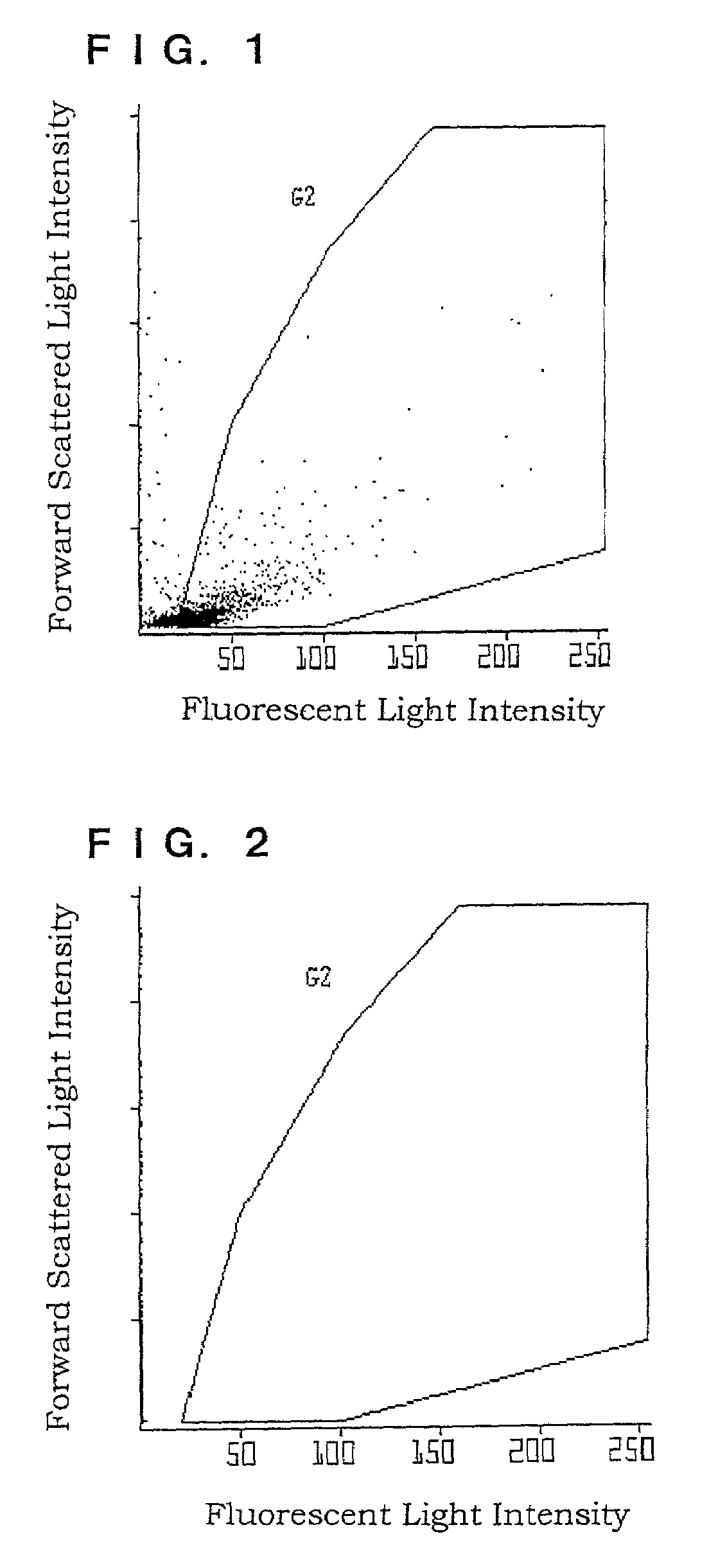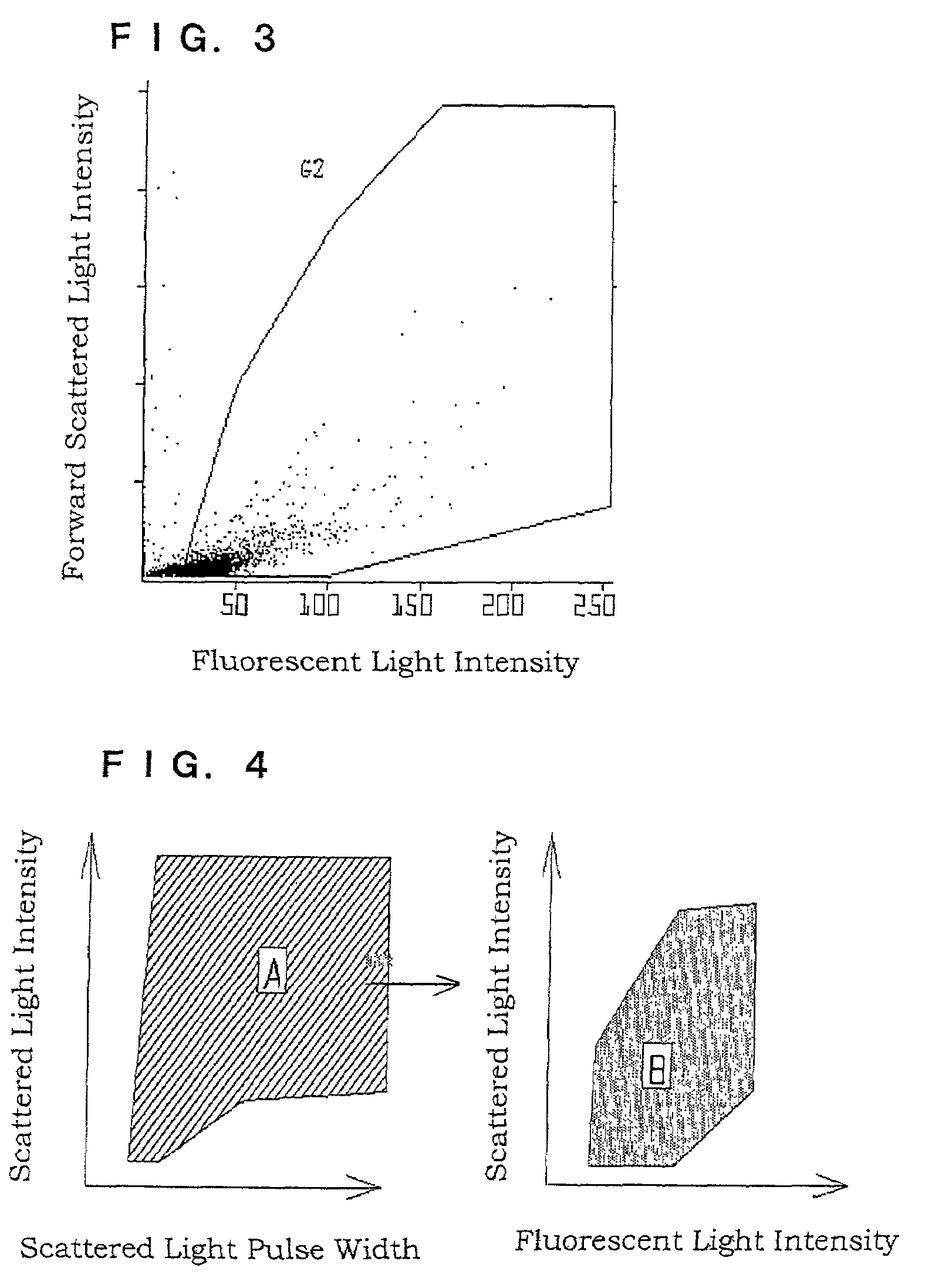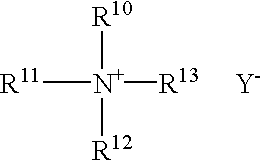Method of staining, detection and counting bacteria, and a diluent for bacterial stain
- Summary
- Abstract
- Description
- Claims
- Application Information
AI Technical Summary
Benefits of technology
Problems solved by technology
Method used
Image
Examples
example 1
[0079]
Reagent Composition(Diluent)Citric acid92.3 mM Sodium hydroxide0.75 g / l (up to pH 2.5)Tetradecyl trimethyl ammonium bromide0.1 % (w / v)Sodium sulfate90 mMAscorbic acid85 mM
(Staining Solution)
Dye A (of the following structural formula) 40 ppm (in ethylene glycol)
[0080]
[0081]To 140 μl of a sample containing a large amount of nitrite ions (bacteria concentration of 5.0×106 / ml; hospital urine), 952 μl of the above-mentioned diluent was added and the staining solution was added so that the final concentration of the dye A would be 1 ppm. Staining was carried out at 40° C. for 20 seconds and then scattered light and fluorescent light were measured by a flow cytometer provided with a red semiconductor laser as a light source (amount of examined urine: 8.0 μl). Then, as shown in FIG. 1, a scattergram was formed with a fluorescent light intensity (FLI) as an horizontal axis and a forward scattered light intensity (FSLI) as a vertical axis. As a control, measurement was performed using ...
example 2
[0083]Measurement was performed in the same manner as in Example 1 except that sulfamic acid of 100 mM was used instead of ascorbic acid in the diluent. FIG. 3 shows the results. Bacteria were stained and detected as in Example 1.
[0084]According to the method of staining bacteria of the present invention, the substance capable of reducing nitrite ions and / or the cationic surfactant are added. Therefore, dye transmissivity to the bacteria cells is enhanced even if nitrate-reducing bacteria produce nitrite ions in the sample, so that bacteria can be quickly detected with high accuracy. Further, since bacteria are stained in an aqueous state, dry fixation such as Gram staining is not necessarily required. Therefore, staining period can be remarkably reduced and thus a sample for measurement can be prepared in a short time including the staining step.
[0085]Since the staining according to the present invention can easily be performed by merely mixing the sample and the reagent, skill req...
PUM
 Login to View More
Login to View More Abstract
Description
Claims
Application Information
 Login to View More
Login to View More - R&D
- Intellectual Property
- Life Sciences
- Materials
- Tech Scout
- Unparalleled Data Quality
- Higher Quality Content
- 60% Fewer Hallucinations
Browse by: Latest US Patents, China's latest patents, Technical Efficacy Thesaurus, Application Domain, Technology Topic, Popular Technical Reports.
© 2025 PatSnap. All rights reserved.Legal|Privacy policy|Modern Slavery Act Transparency Statement|Sitemap|About US| Contact US: help@patsnap.com



